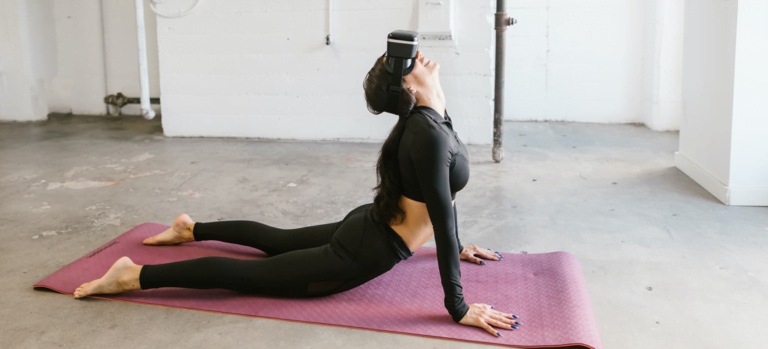Mindfulness meditation is a powerful practice that can help us become more aware of our thoughts, feelings, and experiences. It has been shown to reduce stress, improve concentration, and promote overall well being. By taking the time to slow down and focus on the present moment, we can gain insight into our lives and find greater peace in our day-to-day activities.
In this blog post, we will explore how mindfulness meditation can be used as an effective tool for self-care and personal growth. We’ll look at the benefits of mindfulness meditation as well as tips for getting started with a regular practice. So read on to learn more about how you can benefit from this powerful form of meditation!
Understanding Mindfulness Meditation
Mindfulness Meditation traces its roots back to ancient Buddhist practices, particularly the Satipatthana Sutta, which outlines the basis of mindfulness as a path to enlightenment. However, the modern form of Mindfulness Meditation, as we know it today, was popularized in the West by Dr. Jon Kabat-Zinn in the 1970s. He developed the Mindfulness-Based Stress Reduction (MBSR) program at the University of Massachusetts Medical School, which brought mindfulness into the mainstream of medicine and society.
The fundamental principles of Mindfulness Meditation revolve around cultivating a heightened sense of awareness and acceptance. Its key concept involves focusing one’s attention on the present moment and acknowledging emotions, thoughts, and sensations without judgment. This practice fosters a deep state of relaxation and clarity, promoting mental well-being. Mindfulness Meditation encourages individuals to let go of past regrets and future anxieties, paving the way for a more centered and serene existence.
Getting Started with Mindfulness Meditation
Getting started with mindfulness meditation is a journey of self-discovery and inner peace. Here’s a step-by-step guide in the second person point of view to help you begin your practice:
1. Find a Quiet Space
Choose a peaceful and quiet place where you won’t be disturbed. It could be a cozy corner in your home or a tranquil spot in nature.
2. Set a Time
Decide on a specific time each day to practice meditation. Consistency is key, so try to stick to this schedule.
3. Get Comfortable
Sit or lie down in a comfortable position. You can use a cushion, chair, or yoga mat. Keep your spine straight but relaxed.
4. Focus on Breathing
Close your eyes and take a few deep breaths. Pay attention to the sensation of your breath entering and leaving your body. Let your breathing flow naturally.
5. Observe Your Thoughts
As you breathe, thoughts may arise. Don’t try to push them away, but don’t get attached to them either. Imagine your thoughts as clouds passing by in the sky, observing them without judgment.
6. Bring Back Your Focus
If you notice your mind wandering, gently bring your attention back to your breath. Be patient with yourself; it’s normal for the mind to wander.
7. Start Small
In the beginning, start with just a few minutes of meditation and gradually increase the duration as you become more comfortable.
8. Use Guided Meditations
You may find it helpful to use guided mindfulness meditation sessions. There are plenty of apps and online resources with guided practices to follow along with.
9. Non-judgmental Attitude
Remember, mindfulness is about being present in the moment without judgment. Be kind to yourself and avoid criticizing your meditation experience.
10. Be Patient
Mindfulness is a skill that takes time to develop. Be patient with yourself and celebrate the progress you make, no matter how small.
11. Make It a Habit
Consistency is vital in establishing a meditation practice. Make an effort to meditate regularly, and it will become a natural part of your daily routine.
Remember, mindfulness is a journey, not a destination. Embrace each moment with openness and curiosity, and over time, you’ll experience the benefits of mindfulness meditation in your daily life. Happy meditating!
Overcoming Challenges in Mindfulness Meditation
Starting a mindfulness meditation routine can feel like a tall order. You may find it difficult to focus, or you might struggle with making it a daily habit. Sometimes, you might even feel like you’re not ‘doing it right.’ But hey, don’t sweat it!
First off, remember that there’s no ‘right’ or ‘wrong’ way to meditate. It’s all about becoming aware of the present moment. If your mind wanders, that’s okay. Just gently bring your attention back to your breath. As for making it a habit, try starting small. Maybe meditate for five minutes a day, and gradually increase your time. You can also experiment with different times of the day to find what works best for you.
And remember, be patient with yourself. Progress might be slow, but it’s important to keep at it. With practice, you’ll find it easier to stay focused during your meditation sessions and you’ll begin to appreciate the calm and clarity it brings to your life. So just keep breathing and enjoy the journey!
Benefits of Regular Mindfulness Meditation
Practicing mindfulness meditation regularly can be a total game changer. It’s like hitting that refresh button for your brain, helping you to stay calm and deal with stress more effectively. Besides reducing stress, mindfulness meditation can also improve your concentration. By training your mind to focus on the present moment, you’ll find it easier to pay attention to your tasks.
Regular mindfulness meditation can also enhance your emotional well-being. By acknowledging your feelings without judgment, you’re giving yourself the chance to understand and manage your emotions better.
Cultivating Mindfulness in Everyday Life
Cultivating mindfulness in everyday life is like planting a garden – it takes a bit of effort up front, but the rewards are bountiful. It’s all about living in the moment, about savoring the here and now instead of fretting about the past or worrying about the future. Mindfulness is a simple concept, but it’s not always easy to achieve, especially in our fast-paced modern world full of distractions. However, with practice, you can achieve a state of mindfulness through activities like conscious breathing, eating, walking, or meditation.
The beauty of mindfulness is that it can be practiced anywhere, anytime – while you’re brushing your teeth, taking a shower, or waiting in line. By inviting mindfulness into your everyday life, you can reduce stress, boost your mood, and improve overall life satisfaction. So, why not start today? Just remember, be patient with yourself – cultivating mindfulness is a journey, not a destination.
Overcoming Common Misconceptions
Mindfulness meditation is not about turning off your thoughts or achieving some sort of “zen” state – that’s a common misunderstanding. In reality, mindfulness is about becoming more aware of your thoughts and feelings without getting caught up in them. It’s not necessary to have a perfectly quiet mind to reap the benefits.
And guess what? You don’t have to be an expert at first! Even if you just start with five minutes a day, you’re on the right track. It’s all about building up that mindfulness muscle over time. Also, you can practice mindfulness anytime, anywhere. You don’t need a candle-lit room with incense burning.
Whether you’re on a crowded subway or in the middle of a hectic workday, you can always take a moment to focus on your breath and be present. So, let’s drop these misconceptions and start embracing mindfulness for what it really is – a powerful tool for reducing stress and enhancing overall well-being!
The Science behind Mindfulness Meditation
Several scientific findings provide compelling evidence for the positive impact of mindfulness meditation on both the brain and overall mental and physical health. As researchers continue to explore the depths of this ancient practice, the growing body of evidence only further underscores the significance of mindfulness meditation as a valuable tool for enhancing well-being and living a more fulfilling life.
- Mindfulness-based therapy is an effective treatment for a variety of psychological problems, and is especially effective for reducing anxiety, depression, and stress.
- Mindfulness treatments were shown, in general, to be of similar potency with first-line psychological (and psychiatric) interventions
- Mindfulness interventions (and particularly 8-week mindfulness programs, such as MBSR and MBCT) improve the management of chronic pain, reduce depression relapse rates in at-risk individuals, and improve substance abuse outcomes
- Mindfulness interventions can improve pain management outcomes among chronic pain populations, and there is preliminary evidence for mindfulness interventions improving specific stress-related disease outcomes in some patient populations
- Training in meditation or exercise may be effective in reducing acute respiratory infection (ARI) illness burden
Closing Thoughts
Remember, mindfulness meditation is a transformative practice that offers a multitude of benefits for our mental, emotional, and physical well-being. Through this journey of self-discovery, we learn to cultivate a deeper awareness of the present moment, embracing it with an open heart and a non-judgmental mind.
The beauty of mindfulness meditation lies in its accessibility to everyone. It doesn’t require any special equipment or training; all you need is a willingness to be present and to embrace each moment with curiosity.
As we continue to practice mindfulness, we find that its benefits extend far beyond our meditation cushion. It permeates into our daily lives, enhancing our relationships, reducing anxiety, and helping us find joy in the simplest of experiences.
So, I invite you to embark on this beautiful journey of mindfulness meditation. Start with a few minutes each day, gradually expanding your practice as you see fit. Be patient with yourself and remember that it’s okay to have moments of distraction; it’s all part of the process.







